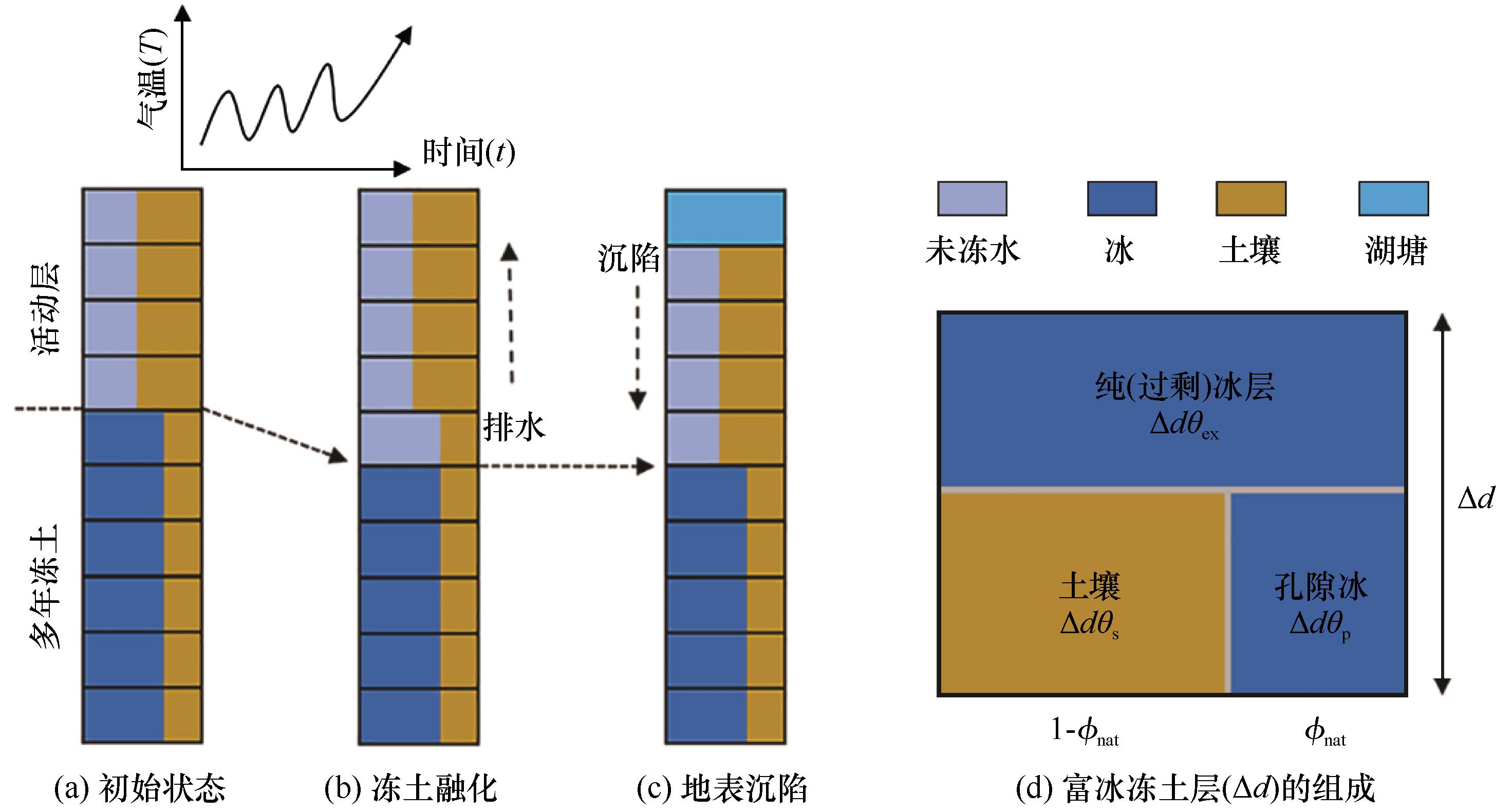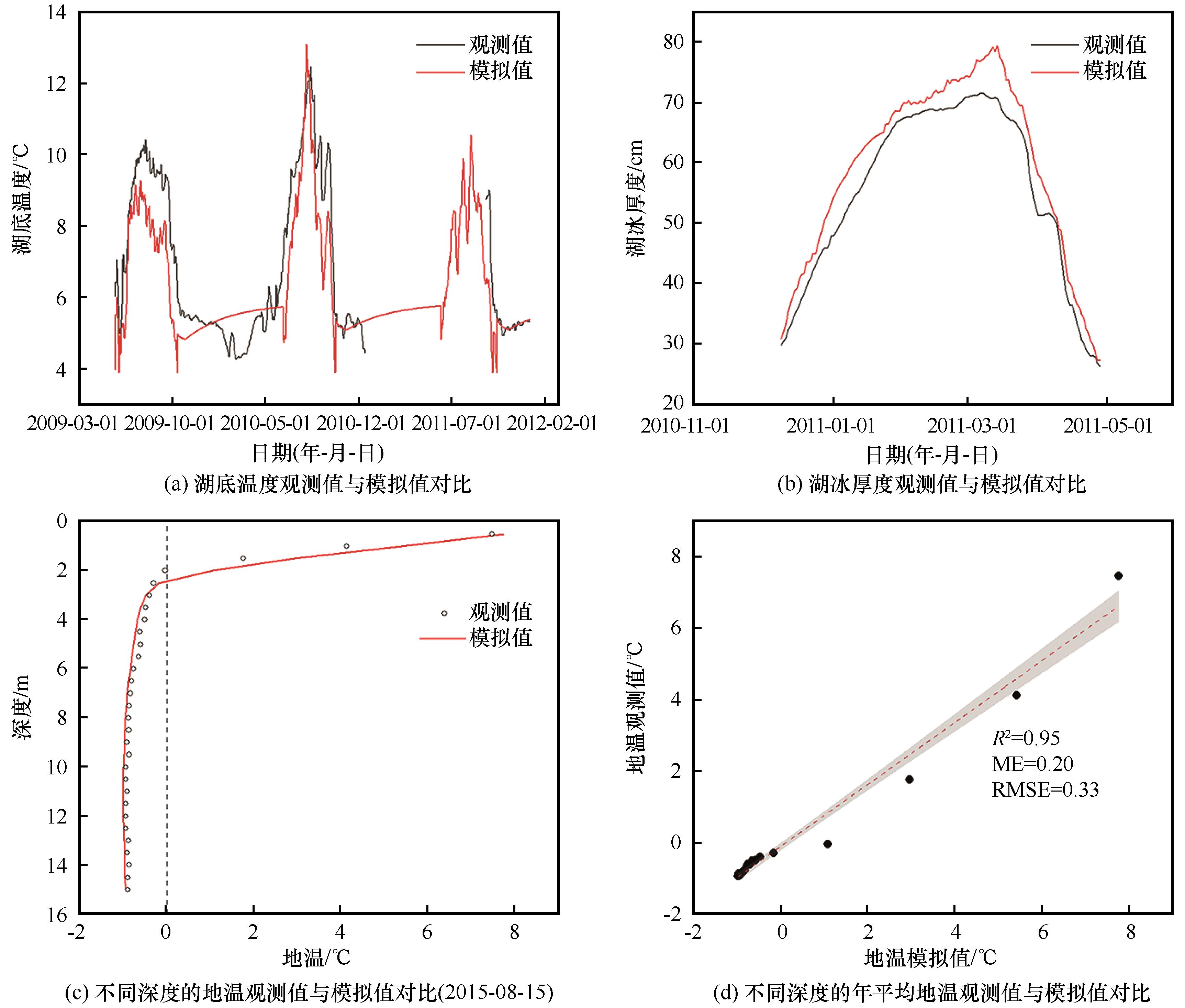| 深度/m | 土壤类型 | 体积含水(冰)量/(m3·m-3) | 参数a | 参数b |
|---|---|---|---|---|
| >0 | 砂土 | 0.3 | 0.07 | 0.17 |
| >2 | 黏土 | 0.35 | 0.12 | 0.15 |
| >10 | 砂岩 | 0.1 | 0.01 | 0.10 |
 Fig. 2 A model depicting the formation process of thermokarst lake: initial state of ice-rich permafrost with excess ice (a), ice-rich permafrost is warming and the water is draining (b), subsided cells are added to lake depth (c) and schematic illustration of an ice-rich soil layer of thickness (
Fig. 2 A model depicting the formation process of thermokarst lake: initial state of ice-rich permafrost with excess ice (a), ice-rich permafrost is warming and the water is draining (b), subsided cells are added to lake depth (c) and schematic illustration of an ice-rich soil layer of thickness ( Fig. 5 Model validation: comparison between modeled and measured temperatures at bottom of the BLH-A Lake (a), comparison between modeled and measured lake ice thickness (b), comparison between modeled and measured ground temperatures at different depths on August 15, 2015 (c) and comparison between modeled and measured annual mean ground temperatures at different depths (d)
Fig. 5 Model validation: comparison between modeled and measured temperatures at bottom of the BLH-A Lake (a), comparison between modeled and measured lake ice thickness (b), comparison between modeled and measured ground temperatures at different depths on August 15, 2015 (c) and comparison between modeled and measured annual mean ground temperatures at different depths (d)